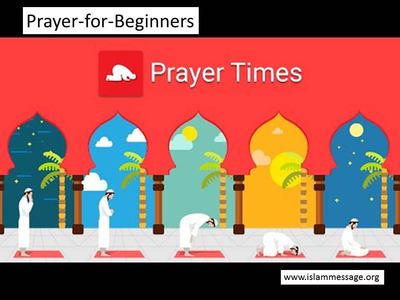
You can find the prayer (salah) timings anywhere in the world. This site will also list the mosques nearest to you.
(c) Your local mosque or Islamic center most likely prints a prayer schedule that will also list the timings for the congregational prayers held in the mosque. Please contact them to obtain a copy. In the mosque, a new Muslim will find much needed support as well.
Prayer Namein Arabic |
Prayer Namein English |
Number of Units (Rakahs) |
Timings |
|
Fajr |
Dawn Prayer |
2 |
From dawn till sunrise |
|
Dhuhr |
Afternoon Prayer |
4 |
From the time of Dhuhr till the time Asr begins |
|
Asr |
Late Afternoon Prayer |
4 |
From the time of Asr till the time Magrib begins |
|
Maghrib |
Sunset Prayer |
3 |
From the time of Magrib till the time Isha begins |
|
Isha |
Night Prayer |
4 |
From the time of Isha till the middle of the night. Due to necessity, can be extended up to dawn |
Table 1 lists the five daily prayers and the number of units (rakahs) for each obligatory (fard) prayer.
Which Direction Do I pray in?
A Muslim is required to face the direction of the Kabah (the Sacred House of Allah in Mecca) for each prayer salah. The Kabah is the first house built to worship humanity’s One, True Lord. All Muslims throughout the world face it when they pray, leaving the world behind them whilst submitting themselves to their Sustainer. This direction is called the qiblah and it is fairly easy to figure it out.
Again, you have several options to figure out the direction of prayer (qiblah).
(1) Ask a fellow Muslim which in which direction you need to pray.
(2) http://www.islamicfinder.org/ will tell you where the Kabah is located from where you are.
(3) Some wrist watches are available in the market that make finding the direction of prayer quite easy, especially when one is in an unfamiliar place or traveling. They can be ordered online[1].
Getting Ready for Prayer (Salah)
1. The prayer is obligatory on every adult, sane Muslim once the time for a certain prayer has started.
2. Minimum clothing requirements must be met by both men and women for prayer.
A Muslim man must wear clothing that at least covers him from navel to knee, and make sure that his shoulders are covered.
A Muslim woman must wear loose clothing that covers her whole body, including her head (and ears) and feet. She need not cover her hands and face.
3. A Muslim must be in the state of purity, meaning the person:
·should perform wudoo (ablution) if he has passed wind, urinated, defecated or woke up from sleep since the last time he performed wudoo.
·should perform the ghusl (ritual bath) if he woke up from a wet-dream, ejaculated semen, had intercourse and additionally, in case of a woman, she ended her monthly cycle or her post-childbirth bleeding.
4. He must make sure there is no impurity on his clothes, body, or the spot he will pray.
5. He should face the direction of prayer (qiblah).
6. Make intention to perform the prayers in the heart.
7. The formal prayer (salah) must be offered in Arabic, so please read the transliteration of the Arabic text provided at the end of ‘Prayer for Beginners (part 2 of 2)’. The translation is given just to help know what you are saying.


